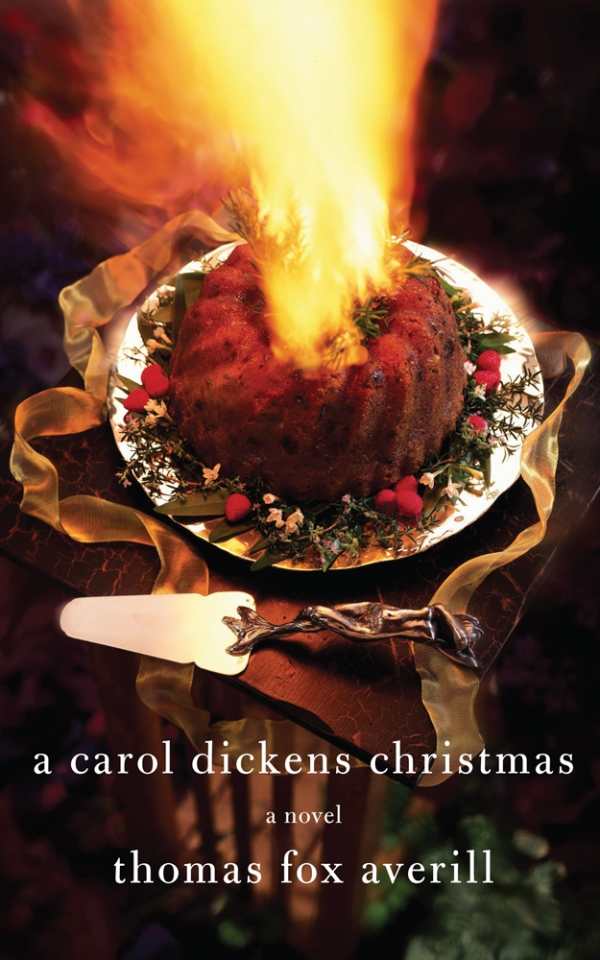A Carol Dickens Christmas
A Novel
Averill captures the essence of Christmas as a woman struggles to hold onto her rituals.
Cheery yuletide traditions are hampered by modern-day distractions in A Carol Dickens Christmas by Thomas Fox Averill, a charming story that pieces together morsels drawn from Charles Dickens’s A Christmas Carol: Christmas songs, poems, recipes, and themes of family and change*.*
Set during the days leading up to Christmas, the story unfolds to reveal that a minor departure from tradition is not always a bad thing. In spite of her son Finn’s impending departure for college, single mother Carol is determined to keep the Christmas spirit alive through her recipes, ritual reading of A Christmas Carol, and planning for Christmas dinner. Carol is also left alone to cope with Finn’s dying dog because Finn is keeping a watchful eye over Gabriela, his very pregnant friend from school. To further complicate things, Carol’s ex-husband wants her to sell her home, and her friend Laurence is aggressively courting her. Unlikely philosopher and savior Mr. Marble, a handyman of sorts, calmly and constantly guides everyone with his practical advice. But will Carol have the Christmas she is hoping for?
The plot of A Carol Dickens Christmas develops at a gentle, engaging pace as it draws connections to various Christmas traditions. The references to A Christmas Carol are loose, for the most part. For example, Finn’s money-hungry father is likened to Scrooge, as Carol imagines how Dickens would describe him: “He was a selfish man, a mean, tight-hearted, clutch-fisted man.” It can be confusing to attempt to find exact parallels between the works—Carol’s suitor, Laurence Timmons, is like Dickens’s Tiny Tim because Laurence has lost both legs in a car accident; however, he is also like Scrooge in that he transforms from a helpless, clingy man into one who strives to take care of Carol during her Christmas chaos.
Carol’s unusual appreciation for punctuation, which borders on obsession, is unique, entertaining, and somewhat endearing. When she needs to escape from her anxieties, “she would go to her study carrel and count semicolons.” Mr. Marble’s poetic, philosophical speech evokes literary language of the past. For example, when the woman at the birthing center asks about the relationship between Finn and Gabriela, Mr. Marble asks her not to ask any more questions: “For it’s a tangled situation. A jumble of string, and best not straightened out by tightening, you see.”
There are some awkwardly long sentences that might play on Carol’s love for punctuation, but that can still be distracting: “She abandoned Dickinson as one more complicated American, though if editors had regularized her poetry with semicolons, that still reflected the time period, the conventions of the nineteenth, rather than the twentieth, century.”
However, most of the narrative is smooth. Averill offers colorful descriptions, as with Carol’s dream: “She heard whining and barking and laughter, she slipped on ice, spilled a water bowl, found a pool of punctuation and musical notes that sounded static, then silent, then static again, until they were in a bowl, then a nest, then disappeared like frightened birds.”
A Carol Dickens Christmas captures the essence of Christmas, revealing that changes can sometimes bring blessings.
Reviewed by
Maya Fleischmann
Disclosure: This article is not an endorsement, but a review. The publisher of this book provided free copies of the book and paid a small fee to have their book reviewed by a professional reviewer. Foreword Reviews and Clarion Reviews make no guarantee that the publisher will receive a positive review. Foreword Magazine, Inc. is disclosing this in accordance with the Federal Trade Commission’s 16 CFR, Part 255.

